It used to be home party girl pick up sex videoa regular understanding that "going hands-free" in a car, related to sending and receiving phone calls or messages while on the go, but the phrase is taking on a whole new meaning thanks to hands-free driving technology like General Motors' Super Cruise. We had a chance to test out the relatively new feature over hundreds of miles in Cadillac's flagship SUV, the 2021 Escalade.
These days, phrases like hands-free driving, self-driving cars, or semi-autonomous driving are muddying up what vehicles can actually do. Super Cruise is currently the only hands-free driving technology, but is progressing at a rate where it will be available in more than General Motors' most expensive vehicles.
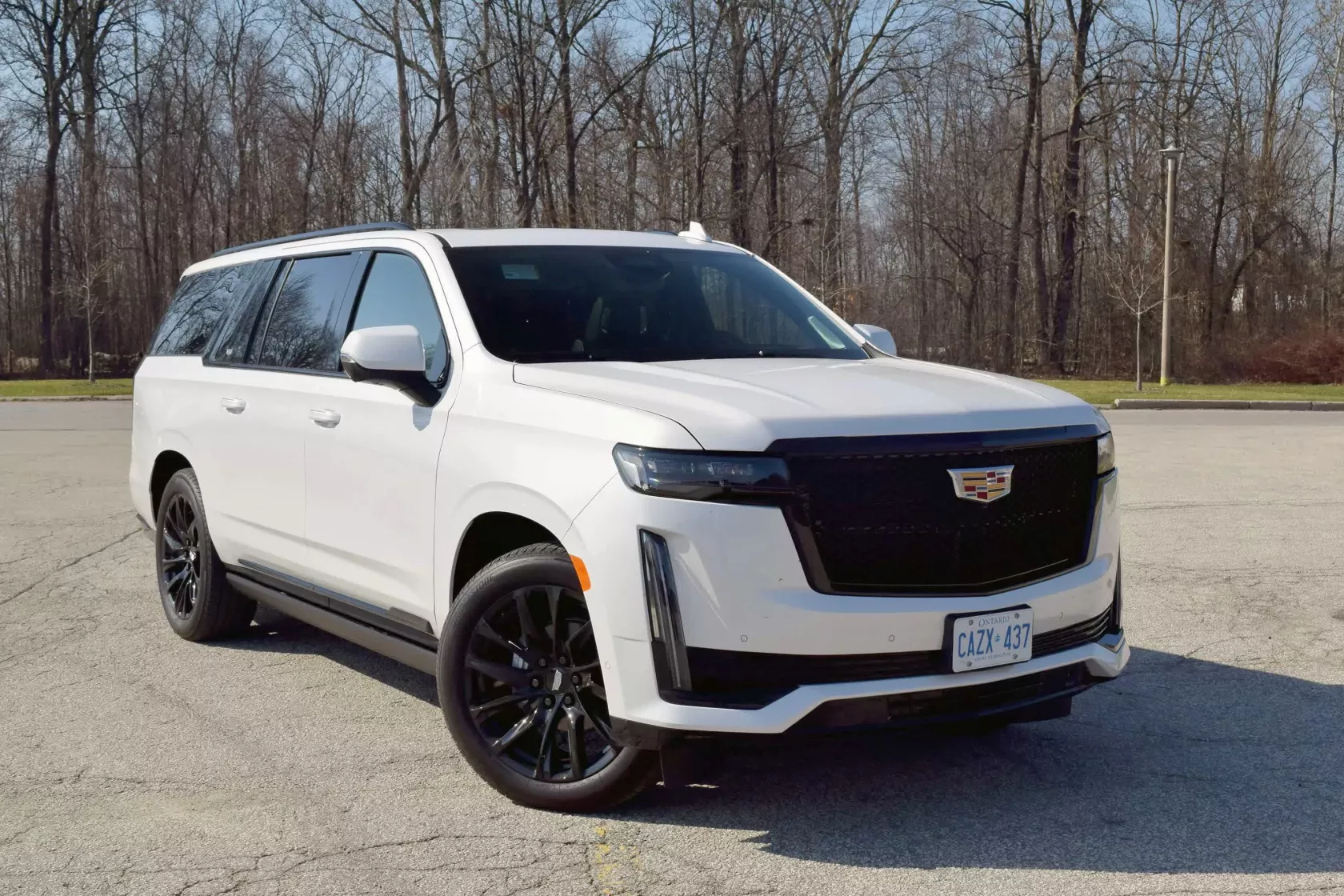
Before the Tesla faithful blow up my mentions, the electric automaker itself has stated that Autopilot is "intended for use only with a fully attentive driver who has their hands on the wheel and is prepared to take over at any time."
However, Tesla's Autopilot and Full Self Driving (that's the name of the feature) do a pretty good job of navigating around town and on lanes, but frequently asks drivers to keep their hands on the wheel and pay attention. It seems like Tesla is quickly updating its technology and may be able to offer a fully-featured system like GM's Super Cruise in a reasonable time table.
What is Super Cruise?
First debuting on the niche Cadillac CT6 sedan in 2017, Super Cruise is what GM envisions as the next evolution of cruise control. If you hadn't heard much about it over the past four years, we wouldn't blame you.
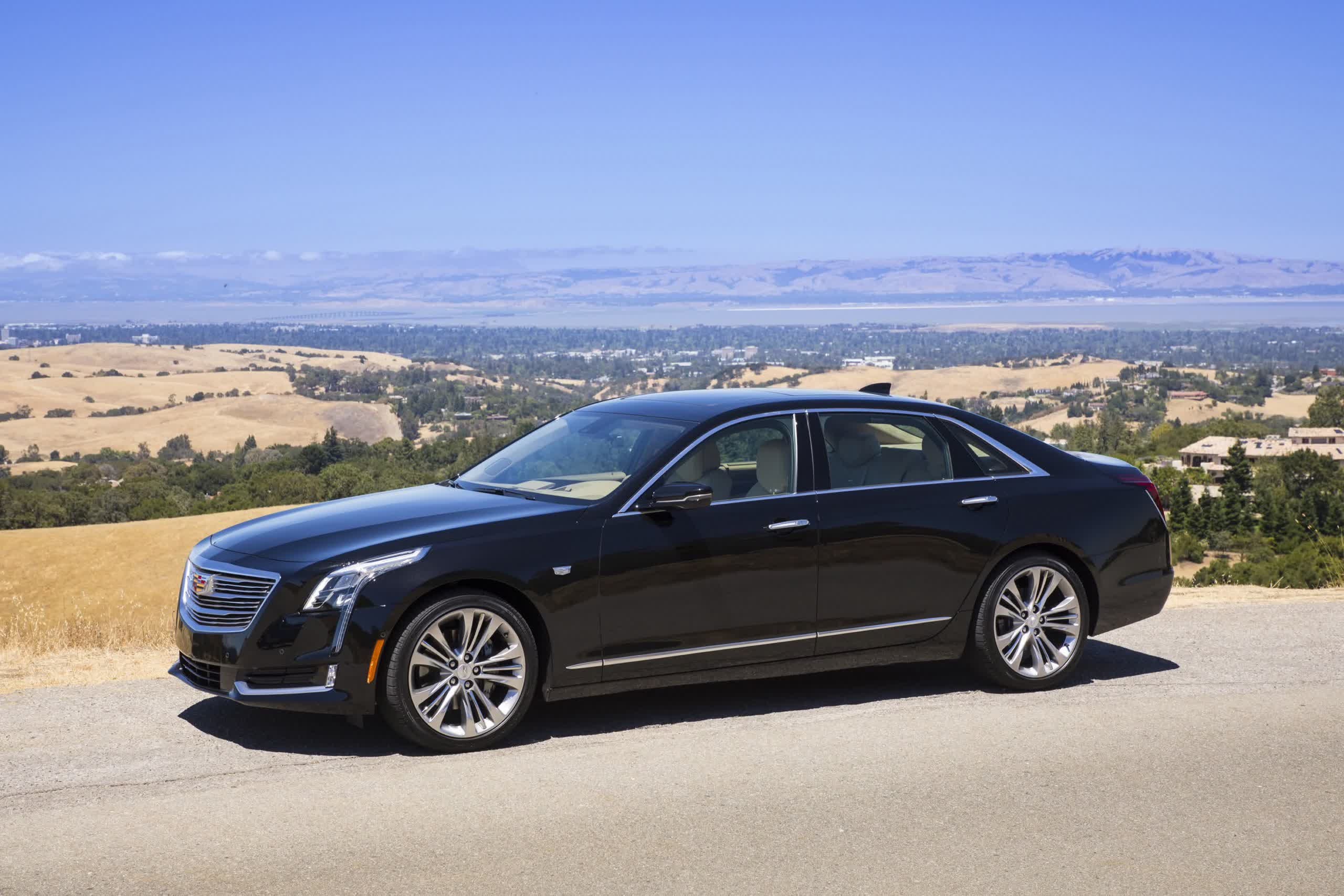
The CT6 was a luxury sedan meant to compete with the likes of the Mercedes-Benz S-Class and BMW 7 Series, two behemoths that overshadow Cadillac's offerings in the luxury sedan world. Adding to that, the popularity of sedans has been waning over the past few years, leading the CT6 to be dropped by Cadillac eventually.
Super Cruise only works on freeways and highways, taking over the steering, acceleration, braking, and even lane changing duties from the driver. It allows for hands-free driving but ensures the driver is paying attention. It can also identify when a driver will have to take control before it happens.
That's important, because while many cars today have lane-keeping assistance and adaptive cruise control, they have few redundancies, and are not designed to replace the driver's actions. One of the worries about using these systems together is that it creates a false sense of security, leading drivers to get distracted doing other things in the vehicle, like checking their phones.
Unfortunately, distracted driving seems more common when these features are available, so they use torque sensors on the steering wheel to ensure the driver is ready to take over whenever the vehicle can't identify what it has to do ahead.
How does Super Cruise work?
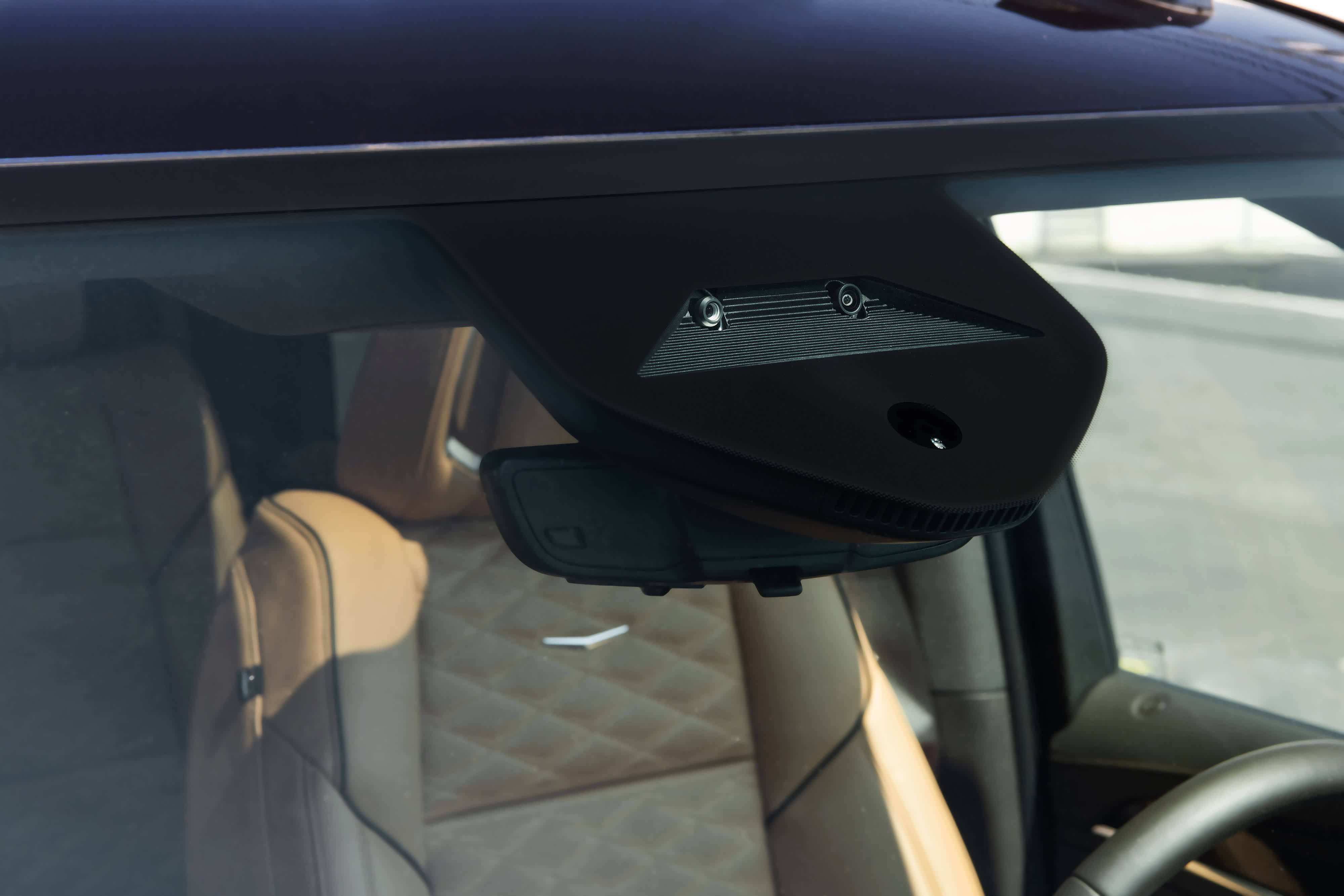
Super Cruise is GM's answer for the current limitations in these features. Specifically, it has a better understanding of the routes that the vehicle is operating in, and can safely communicate with the driver about when they're supposed to take over.
Where most cars use cameras and radar sensors to detect surrounding vehicles and lane markings, Super Cruise also incorporates a reference of highly detailed map data, created using LiDAR (the acronym for Light Detection and Ranging, which is a special type of laser mapping method) that ensure that the vehicle isn't just relying on on-board sensors. That LiDAR map data is provided by Ushr and is detailed down to the closest 4 inches.
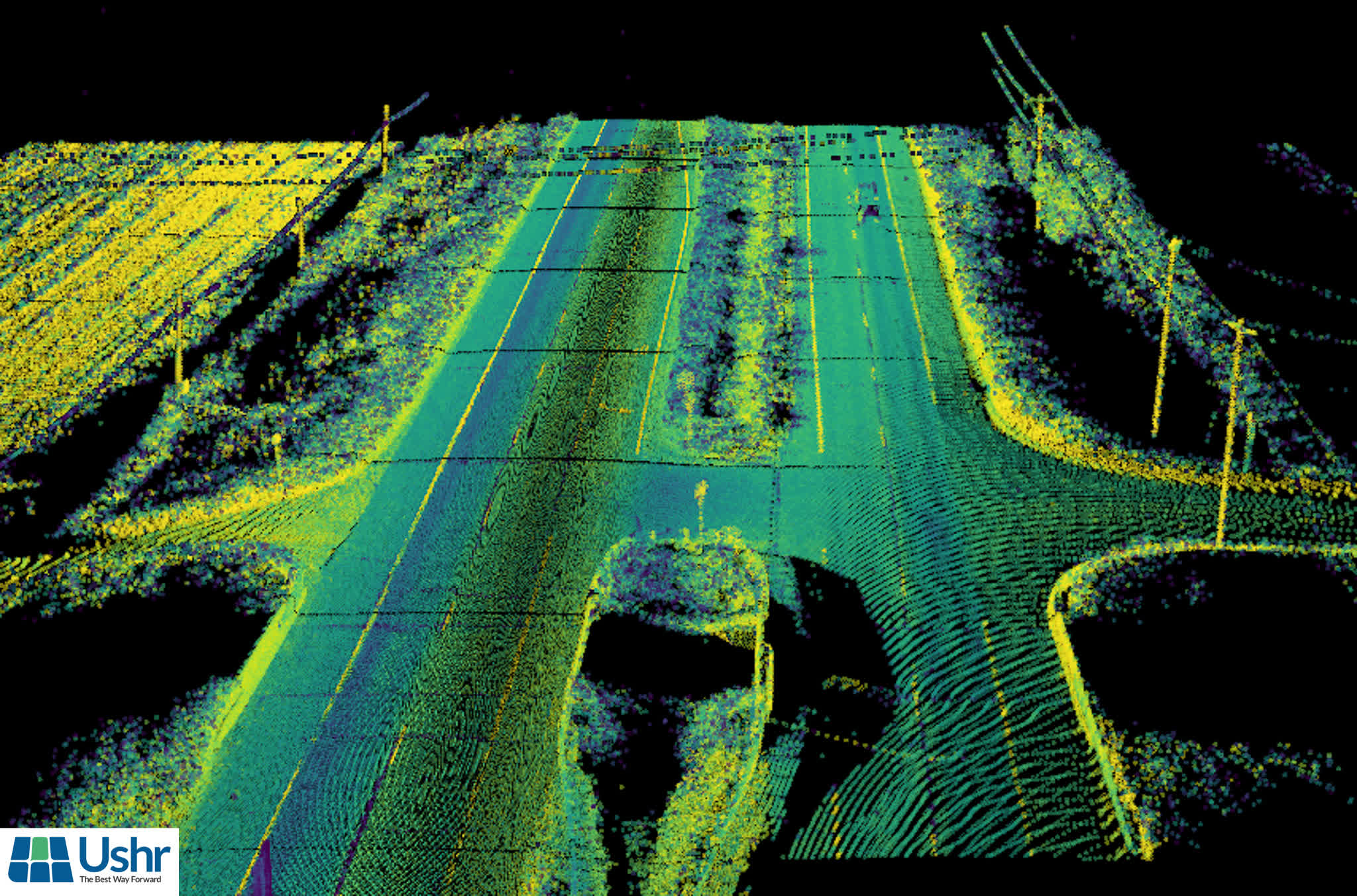
There are over 200,000 miles of mapped highway data in North America, giving Super Cruise plenty of places to operate. The map data is updated quarterly and is saved onboard, not streamed while you're driving. The map updates are free for the first three years of the vehicle's life. After that, the updates are $25 a month, which may be palatable to the likes of Cadillac owners, but sounds a little pricey for a feature that was previously free for 36 months...
In addition to that map data, Super Cruise uses a monitoring system to track the attention of the driver. An infrared camera on the steering column has an unobstructed view of the driver's face and can determine if the driver is looking out the road, or if they've strayed from the task at hand.
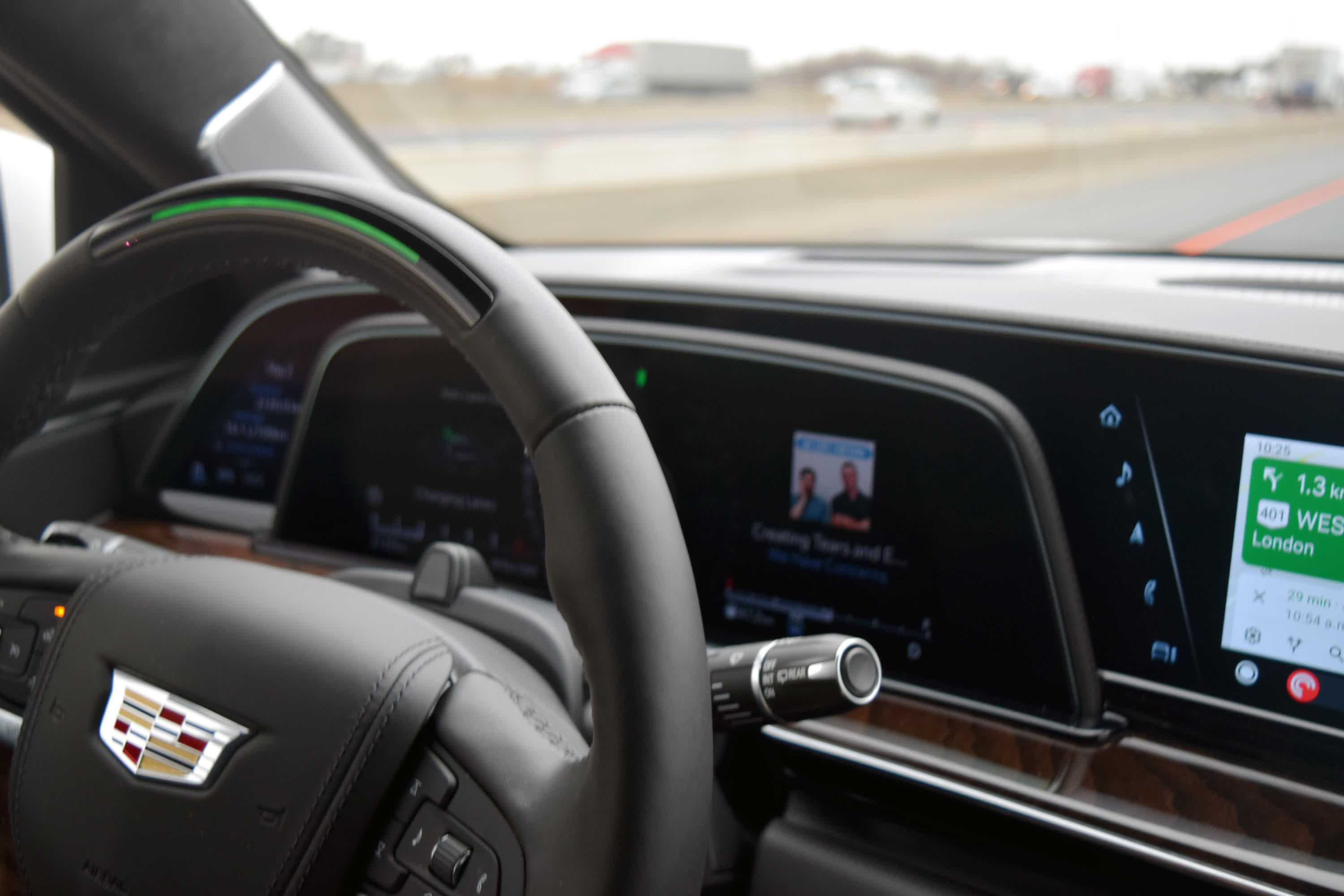
In addition are the sensors, radar systems, and cameras designed to give the vehicle a thorough view of the vehicles around it.
For example, there's a forward-facing camera for the Cadillac Escalade to identify lanes, vehicles, and objects. A long-range radar is housed in the front grille to determine the distance to the car ahead. Two short-range radars detect vehicles beside you, useful for changing lanes or avoiding vehicles encroaching on your space. For added redundancy, there's an array of cameras surrounding the vehicle to provide a 360-degree view around it, and four short-range rear radars that help with lane-change on demand.
But perhaps one of the most important aspects of Super Cruise is the user interface. On the car's steering wheel resides an LED light bar. It lights up green when the system is active, flashes when the vehicle is concerned about your attention level, turns red when it's about to turn off (either due to lack of attention, or entering an area where Super Cruise won't work), and turns blue when you're taking temporary control.
How is it in action?
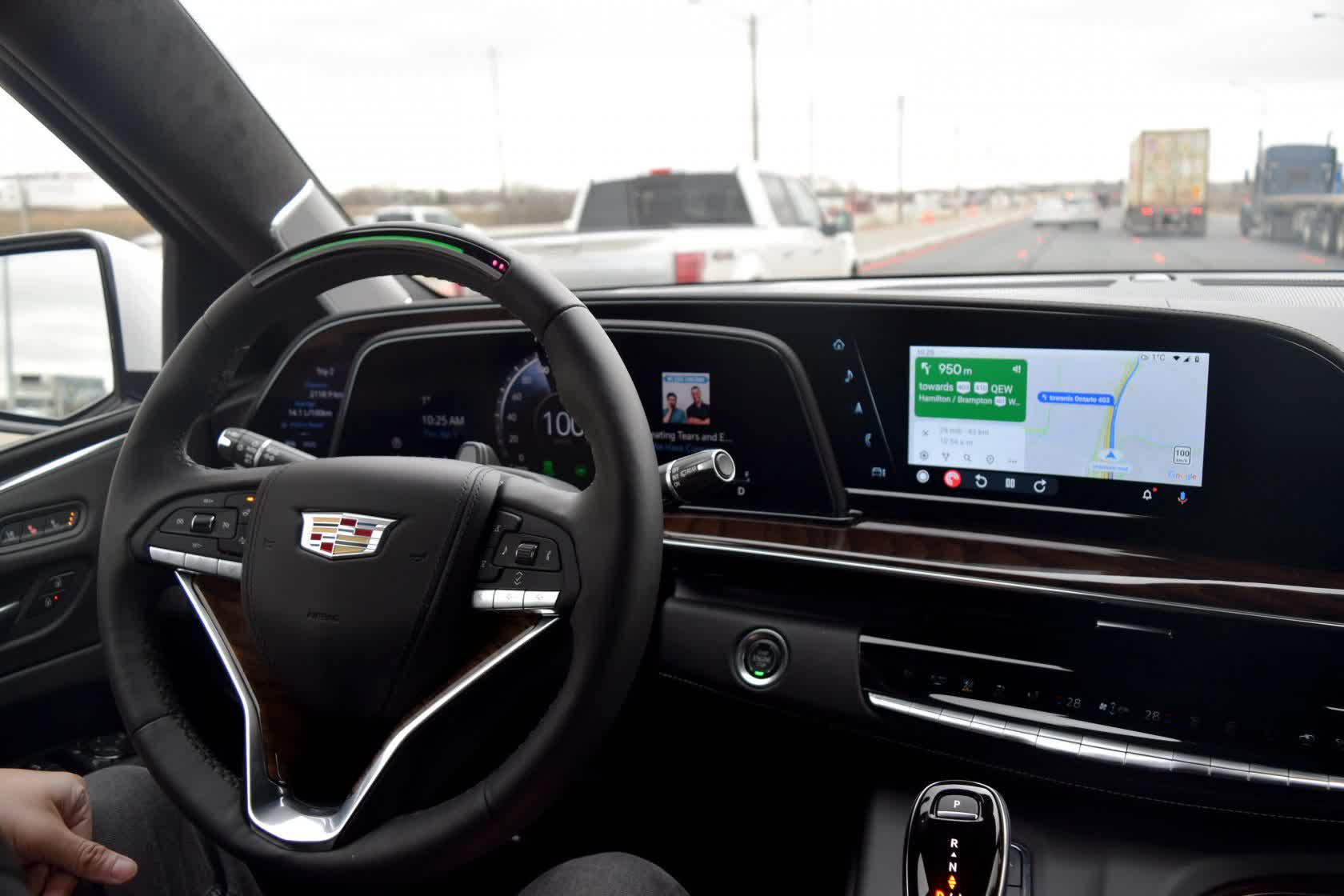
On the road, you can tell that a route is available to be used with Super Cruise thanks to a steering wheel icon on the gauge cluster. Once that is present, just press the matching button on the vehicle's steering wheel. The light on the wheel should turn green, meaning Super Cruise is enabled and you can take your hands off the wheel.
Just like using adaptive cruise control, you can set the maximum speed and gap adjustment using the buttons and rocker switches on the steering wheel.
Super Cruise will adjust to the speed of the vehicle in front, and depending on your gap setting, will keep a close or further gap from the vehicle ahead. Like in other vehicles with adaptive cruise control, the smallest gap still provides perhaps too much space for other drivers to squeeze in front of you, triggering your car to slow down and create that space again. This loop can be frustrating at times.
When Super Cruise is enabled, the vehicle will take over steering duties, and follow the lane markings on the road. It managed to keep the vehicle within its lane even on highways with sweeping turns, something that can stress out other adaptive cruise control and lane-keeping systems.
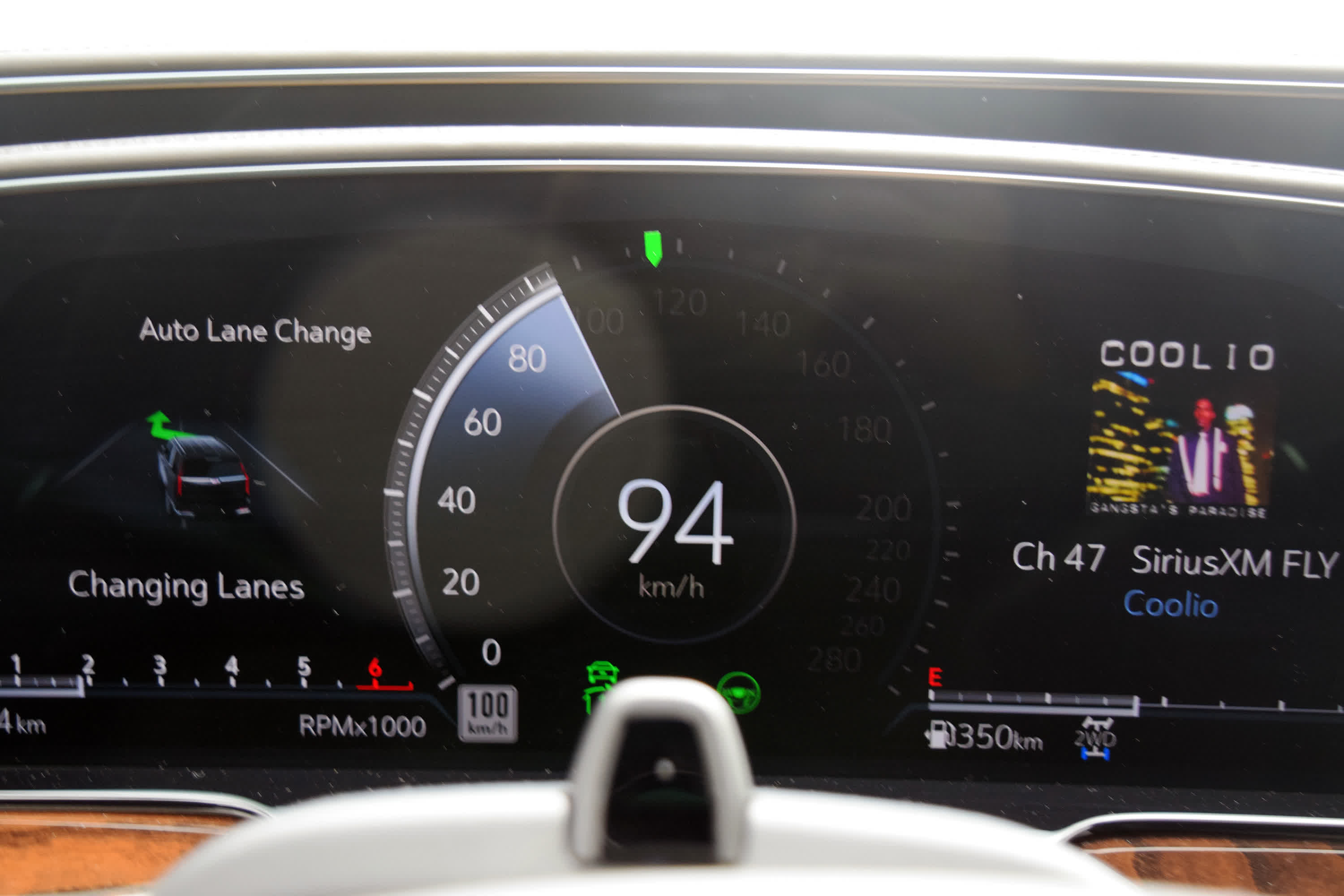
A recently introduced feature for Super Cruise is the ability to perform a lane change on demand. So if you're stuck behind a slower vehicle, you can click the turn signal, and the vehicle will initiate a lane change. First, it checks the traffic in the lane beside you, ensuring it won't cut off anyone or cause an accident. When the path is clear it changes lanes. All that's left for the driver to do is turn off the signal.
The experience is a blend of serenity and anticipation. When you take your hands off the wheel, it feels odd, as you can't really do much else with your hands but put them on your lap. Fiddle with the stereo settings for too long and the vehicle gets concerned about your lack of attention to the road. The green light on the steering wheel flashes, beckoning your gaze, and so you look ahead, wondering what the driver in front may do that will fluster Super Cruise.
Where I live, the highways always seem to be under construction, and that requires a few diversions or temporary lanes. If the map data that Super Cruise relies on believes you're driving in an exit lane, or somewhere you shouldn't be, it will flash red and begin to turn off.
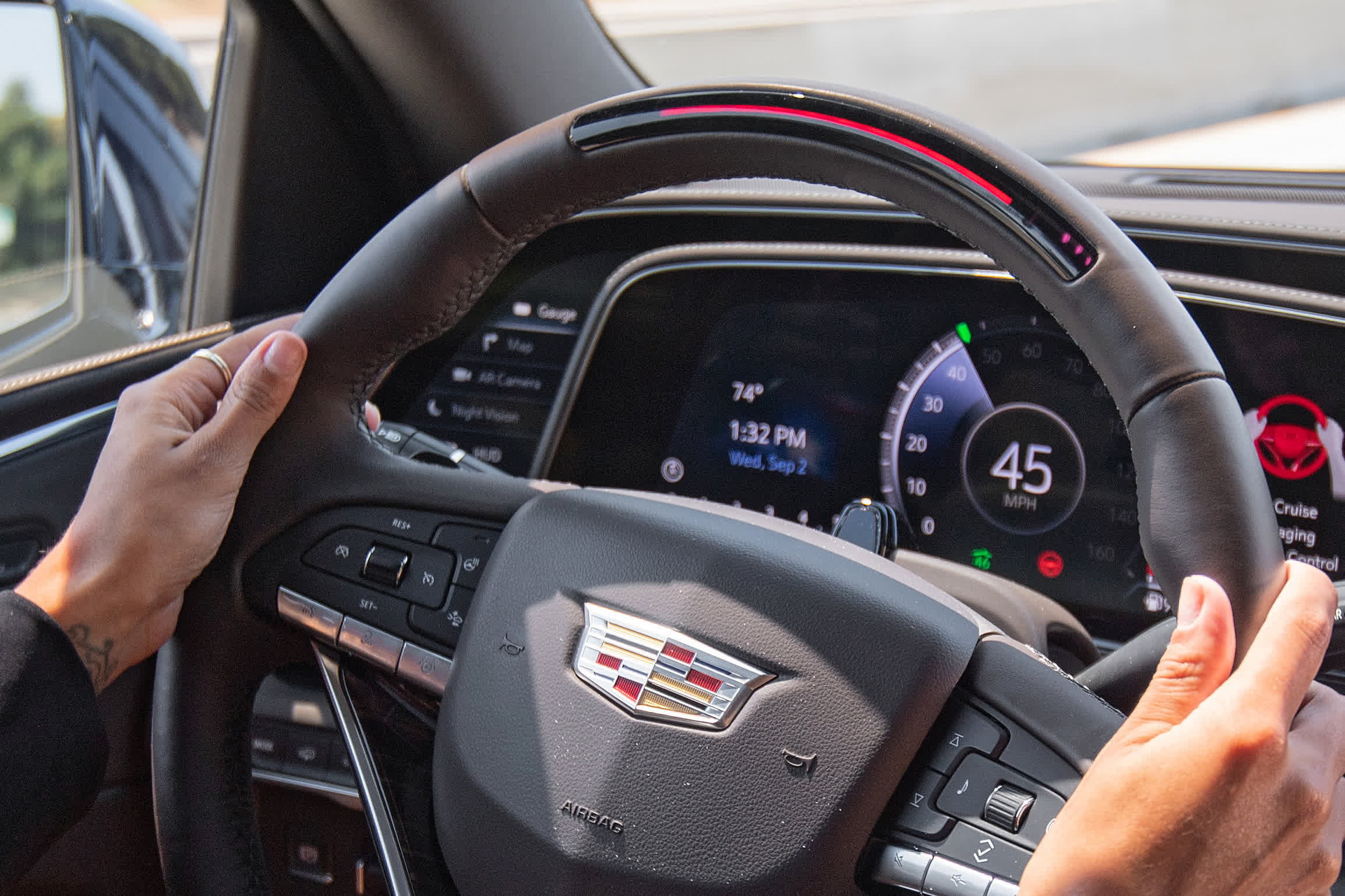
When Super Cruise begins to deactivate, the driver needs to be ready. The steering wheel blinks red, and the vehicle starts to brake. When you take over the steering, either nudge it or move it in some way, the system takes that as a cue that you're paying attention. Applying just the throttle or brakes doesn't seem to satisfy the feature.
If you don't take control of the vehicle when Super Cruise is deactivating, it applies the four-way lights, slows the vehicle to a stop, and a voice loudly plays over the speakers asking you to take control. Supposedly if you still don't react, the vehicle will use OnStar to call the emergency services. Simply put, you can't take a nap in this car like you see those viral videos of Teslas using Autopilot.
Finally, it is worth pointing out that the system has several limitations. While it features detailed map data, it needs clear weather to work, and will struggle in dense rain and snow. Get those camera's covered in mud or ice and Super Cruise won't work, which is a shame because driving assistance during low visibility conditions are exactly where the technology could be useful.
What's next?
My experience with Super Cruise was in the current flagship vehicle in the General Motors portfolio, the Cadillac Escalade Sport Platinum, which has a starting price of over $105,000, before adding the $2,500 Super Cruise option. It's a huge and comfortable SUV, perfect for long road trips and the ideal showcase of a highway-oriented driving aid, but it's not for everyone or every budget.
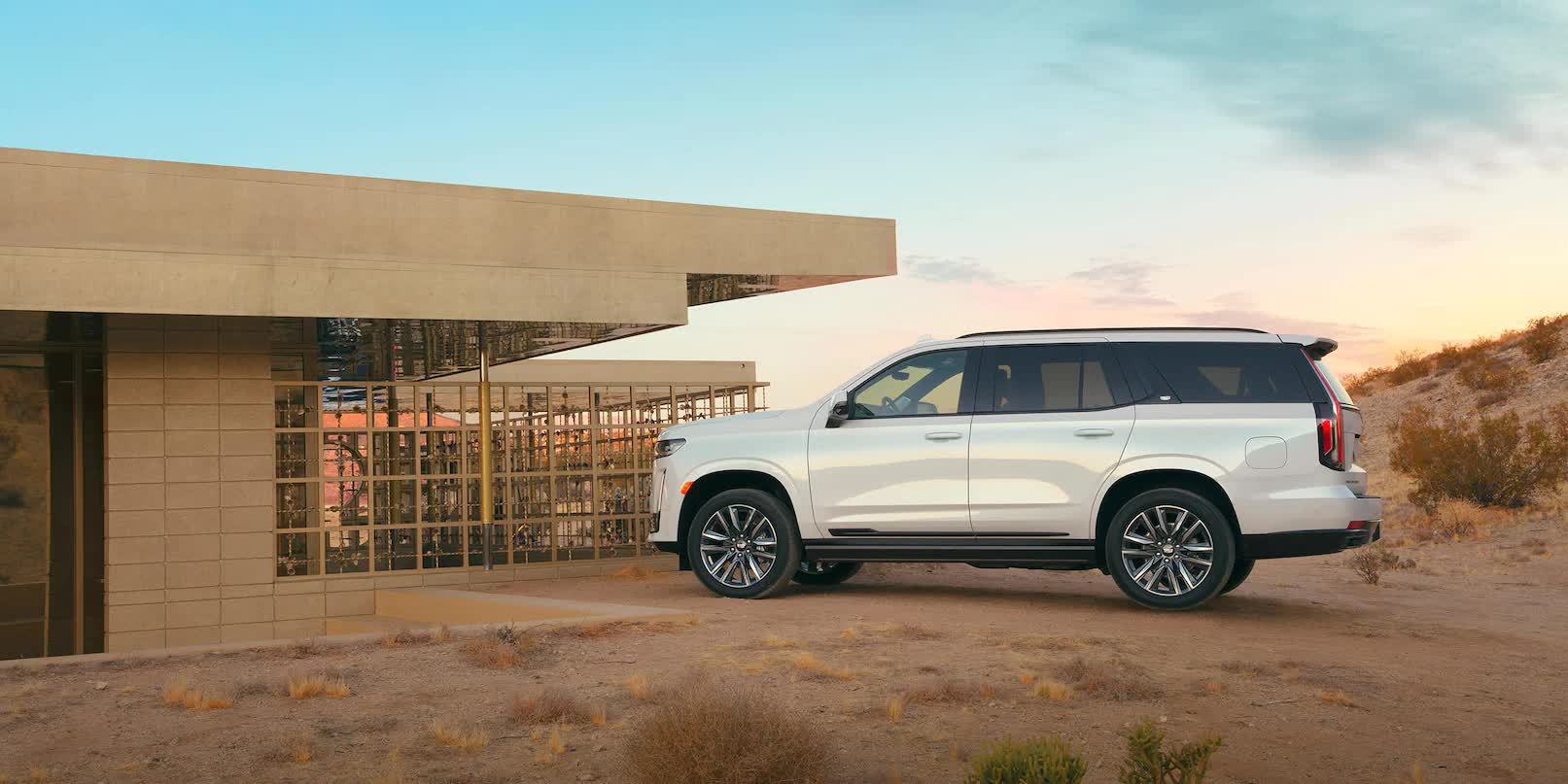
This year, Cadillac has promised to bring the Super Cruise option to a few more of its vehicles, including the CT4 and CT5 sedans, meaning you don't have to shell out six figures to get the feature.
The automaker has also mentioned the availability of Super Cruise on its upcoming electric vehicles including the GMC Hummer EV and SUV, and the Bolt EUV.
Other automakers catching up
General Motors is only temporarily leading the way in the world of hands-free driving technology, as other automakers are quickly catching up. Tesla's Autopilot and Full Self Driving features are getting closer and closer to offering reliable and safe hands-free driving.
Ford has a hands-free feature called Active Drive Assist coming to the F-150 and Mustang Mach-E but is offered in different ways. Pickup truck shoppers can choose the option separately, while the Mustang Mach-E will have the hardware included on the vehicle, and require an over-the-air update and fee to activate it.
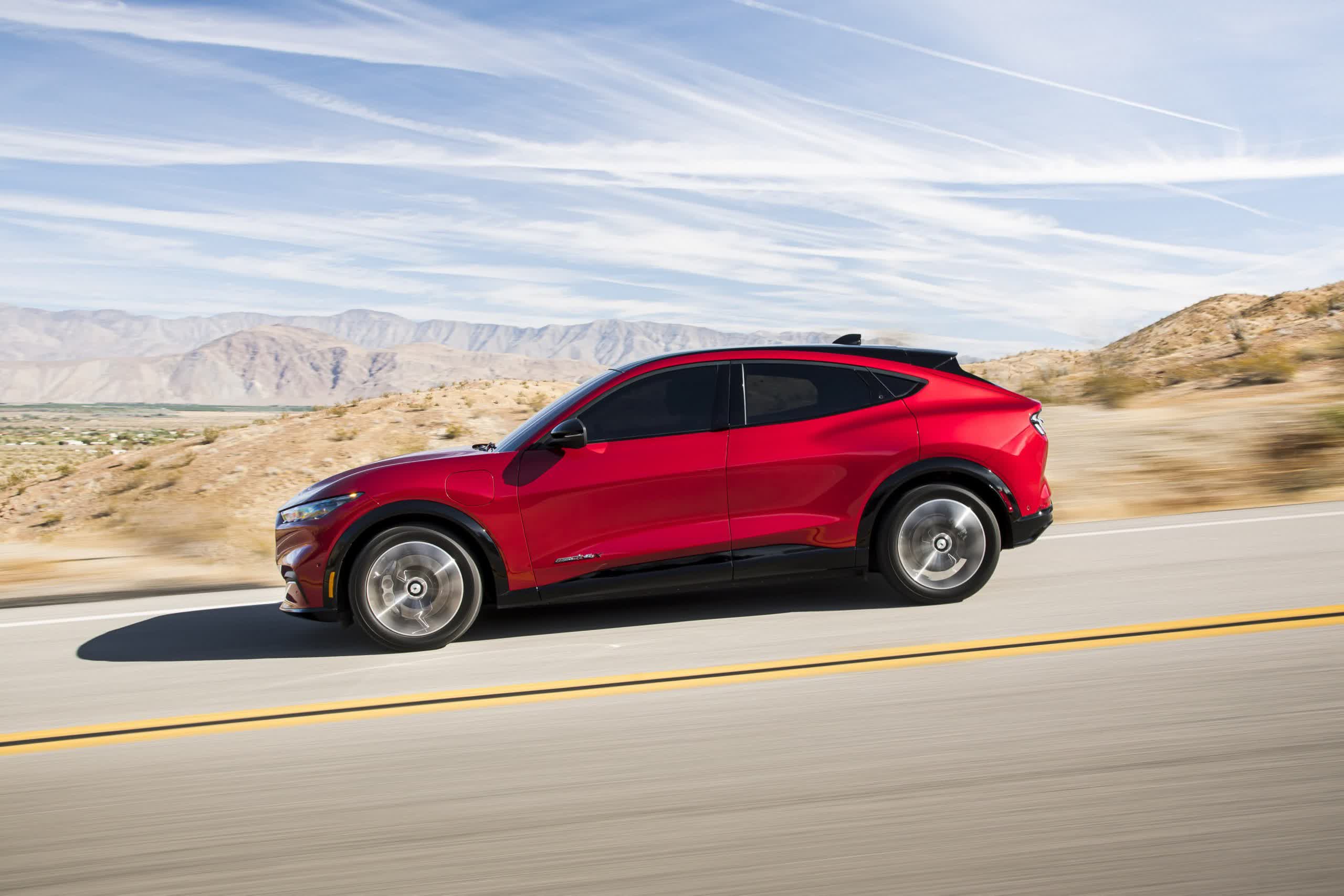
Lexus is also debuting its hands-free driving technology known as Lexus Teammate on the 2022 LS 500h this fall, but is pretty vague in its description saying the technology "allows for driving on limited-access highways with partial hands-free, eyes-on-the-road operation."
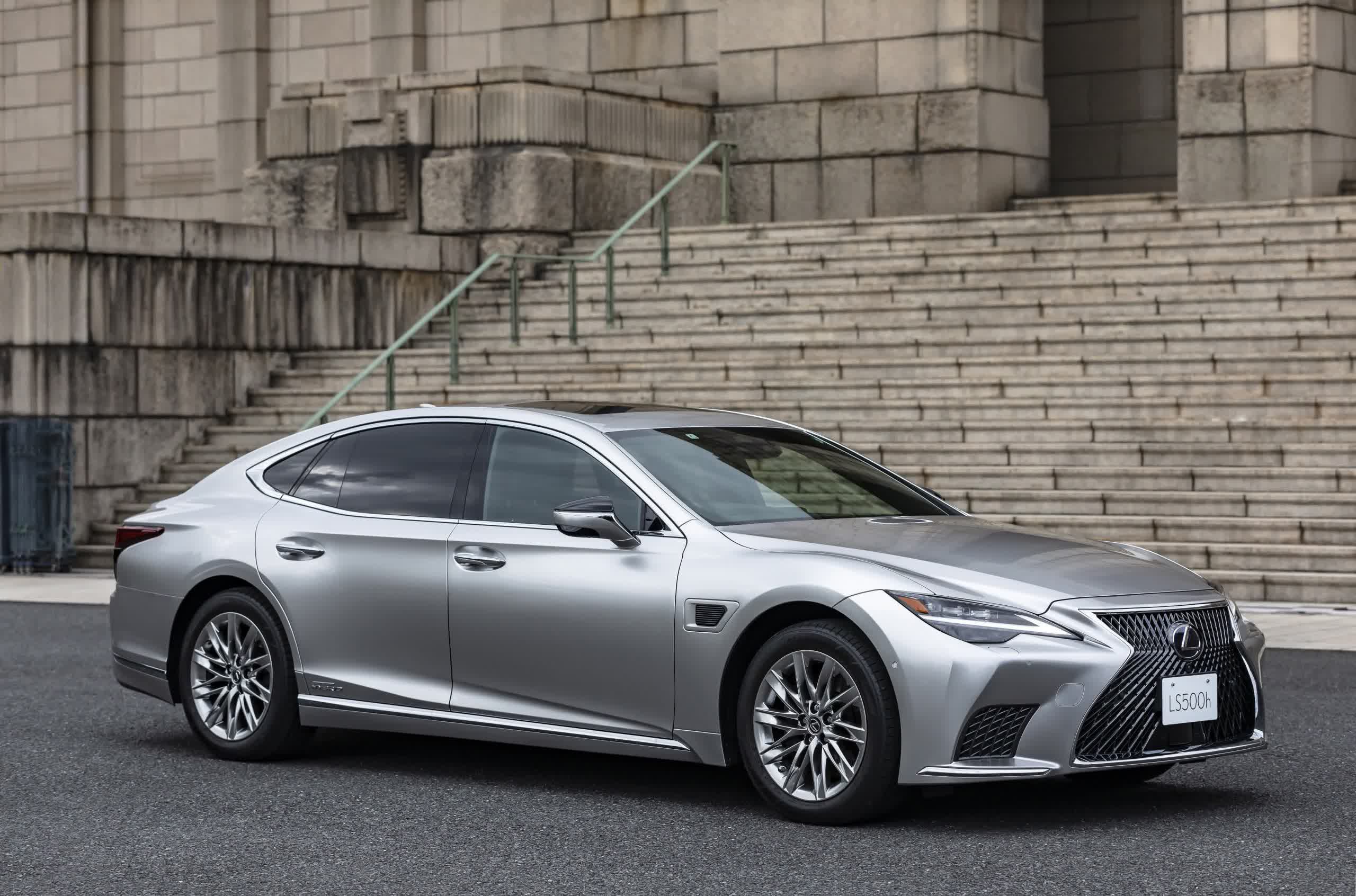
It looks like 2021 is going to be the year of hands-free driving, but be sure to not mistake that for self-driving. Reliably dealing with oncoming traffic, intersections and other obstacles is a whole other can of worms that automakers are going to be dealing with next.